SHE MISSES CANOLA’S yellow flowers. As a kid she liked watching the evening sun sink behind that prairie blanket. She imagined it was going to bed and it made her feel cozy. But southern Manitoba is usually too dry for canola now.
Much has changed since she was born in 2017. Various types of ‘droids mill about streets and offices (Parliament is following the European Union’s lead and debating if artificially intelligent robots should be given human rights), and China won the second space race, sending taikonauts to walk on Mars.
She’s 25 now and a graduate student interested in agriculture. She contemplated studying forest fires because they’ve been a growing problem throughout her life, given the droughts in Western Canada. But food fascinates her. And in a world brimming with AI, where the farm-equivalents of Roombas hum across fields, zapping pests and weeds with lasers or microwaves, making most food “organic”, she likes that this industry still uses some traditional methods.
She also likes that it still relies on weather, although that has become chaotic. Canada’s climate flips drastically between extremes— some periods are hot and dry, some hot and wet. The growing season is longer, though, which is a boon to farmers and our food supply.

But catastrophic flooding now also occurs outside of spring- time as mid-summer deluges cause historically benign rivers to overflow. And, in Manitoba at least, when people talk of winter storms they’re often referring to freezing rain. Some miss the dry cold.
People also long for a time when superbugs were less prevalent. In high school she debated going for elective surgery, and, like most people, opted not to: The risk of contracting a superbug was too great. Provinces hemorrhaged money installing new sanitation systems and protocols, yet that only curbed hospital-acquired infections, and not that well. Superbugs once infected—not always with consequences—legions of people who absorbed them through everyday activities like eating food or playing at parks or shopping at garden stores. Many died.
But many are now being saved since we know how some bacteria can serve as allies, bolstering our health and defending us from infection. Bacterial transplants are common: Doctors put these helpful microbes into the body’s nooks to treat everything from acne to colon cancer. And scientists have also found new, life-saving classes of antibiotics not only in the soil but in the deep sea, and in a rock in Newfoundland.
George Zhanel [BSc(Pharm)/84, PhD/94], director of the Canadian Antimicrobial Resistance Alliance, subscribes to this hope, but with a caveat.
“We have a lot of exciting things in the hopper…but there’s no doubt in my mind things are going to get way worse before they get better,” the Rady Faculty of Health Sciences professor says. “We are changing a lot of the ways we do things. For instance, we’re changing the types of antibiotics we’re discovering. In addition to broad-spectrum drugs that kill beneficial bacteria in us, we are also discovering drugs that act with a laser-like focus—very narrow-spectrum drugs… And we only used to try and kill these bugs dead, but now we are also looking at ways to affect their virulence. So not to kill them, but to wound them so they can’t do damage. This is very exciting.”
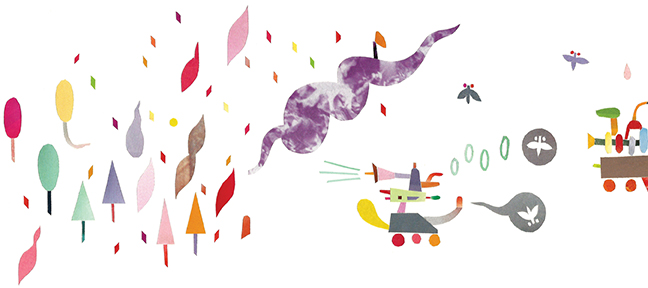
HELLO SUNSHINE
She’s relieved a family friend who recently had a heart attack is okay. Doctors simply slid nanorobots into his arteries to scour the plaque away. They’re powered by ambient microwave energy, using a nano-device invented by physics professor Can-Ming Hu and his students at the University of Manitoba in 2007—but it took decades for the physics breakthrough to come to market, and then suddenly an array of technologies could be implanted under flesh. She doesn’t fully understand how microwave energy powers things, but the principle doesn’t surprise her. Virtually all her appliances charge wirelessly—a flexible computer she can roll or fold into her pocket, yet people still call a “phone”, constantly sips ambient microwave energy.
Most cities still get the bulk of their power from coal and natural gas, although nuclear power plants are resurging thanks to safety innovations. And material science breakthroughs—which has given us self-healing metals and quirky luxuries like silent Velcro—revealed new batteries, allowing us to exploit renewable energy in novel ways. Solar panels drape the exterior of skyscrapers and masquerade as roof shingles, bedevilling some designers.
“You can integrate solar panels on almost every structure but how they are incorporated depends to some degree on architects,” says Shawn Qu [MSc/90], founder of Canadian Solar—one of the largest solar energy companies in the world. “The cost of producing panels is dropping all the time and so now we’re starting to think about new applications… Some asphalt roads may even have solar panels embedded in them…but these are delicate, state-of- the-art semi conductors that require careful maintenance, so, for the time being, that’s a limiting factor.”
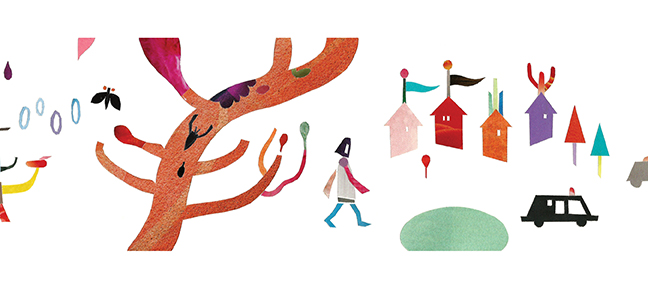
REINCARNATION
She uses her wearable to hail a driverless electric car. A few people (no one she knows) still drive their own cars because they enjoy it, but most prefer hopping into the shared automated cars that constantly and quietly roam roads. Besides, parking lots are hard to find—most have become parks and gardens.
Traffic fatalities are joyfully rare now too. Organ donation groups foresaw this and invested in bioprinters, which offer an inexhaustible supply of customizable tissue with a push of a button. Invented in the early 2000s, they passed trials decades later and now regularly rescue young and old (the heart’s geometry still presents challenges, but kidneys, livers and skin grafts are easily done).
Another upside to these automated cars: they changed our perception of what our cities should be.
“Cities are going to have an incredible rebirth.”
“Cities are going to have an incredible rebirth,” says Chris Urmson [BSc(CompE)/98], former head of the Google self-driving car project. “Way back 100 years ago, the urban core of a city, if you got past the horse dung, was alive and walkable. Today, the core of many modern cities is a dead zone of parking structures and empty office buildings at night. Using shared self-driven vehicles will let us recapture that landscape and turn it into housing, park and commercial space. We’ll change the shape of the roads because we won’t need as much road surface because the space will be used more efficiently. Cities will be revitalized.”
Her car stops at an intersection and she looks out the window to watch the drones wheeze back and forth, delivering stuff to strangers. Then she spies an air- ship drifting high above. She thinks of them as air elephants and chuckles when she calls them “airlephants”. Northern communities call them a lifeline—winters became too short and warm for ice roads so blimps grew in favour and now they fly all year. Indeed, online retailer Amazon filed a patent for floating warehouses in 2014. Even before that, though, Barry Prentice [BSc(CE)/60] from the U of M Transport Institute championed these ves sels, and now his vision floats on.

THE SOFTWARE WILL SEE YOU NOW
Her doctor had her wear a contact lens to monitor her blood sugar. She’s fine and generally healthy. She can access a copy of her genome stored in the cloud, and she consults it when considering what foods to eat. (No dignified person says “superfood” anymore since nutritional scientists learned how genetics and nutritional requirements are linked. Everyone’s talking about nutrigenetics now.)
We’ve long known that since food passes through bacteria in the gut, and every person has a unique gut ecosystem, how well we absorb specific nutrients varies. Certain foods may be better for one person compared to another—even twins may vary. By altering an intestinal ecosystem, we can change bodily systems, ridding us of some diseases.
“We want to get to the point in the future where we can say to an individual, sleep this amount and eat this diet, and you’ll reduce your risk of kidney disease,” says U of M researcher Dylan MacKay [PhD/14], a nutritional biochemist with TMPLR (The Manitoba Personalized Lifestyle Research Program, a U of M-led investigation into how diet, activity and sleep impact chronic disease risk).
Most people sequence their genome and know what they need to do to remain healthy, a task made easier by household toilets that provide user-friendly content analysis reports. People are fitter now, and when someone feels ill enough they walk into a room consisting of a barbershop chair surrounded by automated diagnostic tools.
“The factor that will have astronomical impact on our health care is software.”
“The factor that will have astronomical impact on our health care is software. It sounds so boring, doesn’t it?” says Dr. Ian C.P. Smith, OC [BSc(Hons)/61, MSC/62], inventor of an MRI instrument that enables surgeons to operate on patients lying in the imager.
“We have so much data now and we’ll have so much more in the future, and you keep dumping this into a computer, which will be able to analyze, say, 35 different measurements. It will take all that together, saying, OK, you have this and this and this and this and so on. No doctor’s mind can cope with that amount of information no matter how smart they are, so they focus on a few things. However, if we had 100 ‘observables’, then we’d know exactly what you have, where it is, how big it is, and what the chemical basis is. The software can do this and recommend treatment, and it will make the doctor’s work easier.”
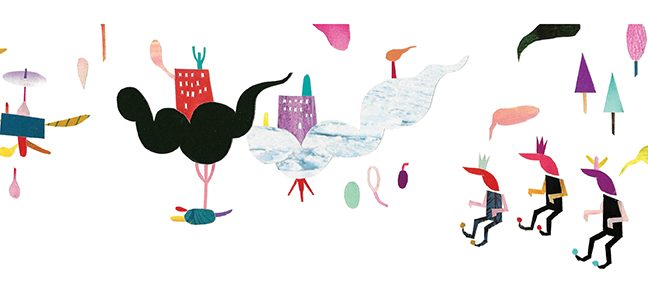
HEROES NEVER DIE
She visits her friend in the hospital. While they talk about the holonar (holographic seminar) she attended, tiny nanorobots scrub his arteries. How’s his heart, she asks. Repairing, he says. Doctors put his own stem cells in this delicate organ to lead a quick rebuild.
As she leaves to meet another friend at the movies she stops in the hospital’s shop to buy a snack. She looks at a barcode with her glasses and double blinks to bring the origins of every ingredient onto her lens—the grasshoppers hail from Norwood, Ont., and the peanuts were farmed outside Vittoria, Ont. Everything seems ethical so she buys it and orders another car to take her to the theatre.
Virtual reality’s transportive power elevated movies once directors and cinematographers relinquished control on where viewers looked. Artificial intelligence and eye-tracking software also changed how people experience stories. When she was born, studios already had software that could weave multiple and variable storylines together, which viewers could manipulate with a mouse click. But now people change the story just by looking at the screen: Watch the man in the frame more than the woman, and the story shifts to his perspective. Or in a suspense film, he gets less screen time. The story seamlessly alters in real time.
People will become active participants in stories but the essentials that make going to a movie so great will still hold true, says Randal Shore [BRS/02], executive in charge at Industrial Light & Magic Vancouver, which creates award-winning visual effects for movies like Star Wars and Jurassic World.
“When I think back to when I was a kid going to the movies, the experience itself really hasn’t changed that much in the past 30 years,” Shore says. “Okay—maybe that’s unfair—we can book tickets online now! But if you think about it, we still line up for blockbuster films such as Star Wars, get our popcorn, settle into our seats and prepare to be wowed as the voices and lights surrounding us begin to dim.”
Laura Michalchyshyn [BA/89], a New York-based television producer and media executive who produces series for networks like AMC and CNN, agrees.
“As a storyteller, I’m always excited by the technologies,” she says, “but I really think it’s about talent. You can have all the technology in the world but if you don’t have the talent behind the screen as writers and directors, or on the screen as performers, it doesn’t work. There are some traditions that just can’t be rid of by technology. There’s some things that just won’t change.”
She leaves the theatre to go to a new marijuana bar. (She can’t fathom a time when it was illegal but hears stories from her parents.)
She asks her friend what he thought of the movie. He says he liked parts, but found it a bit far-fetched.
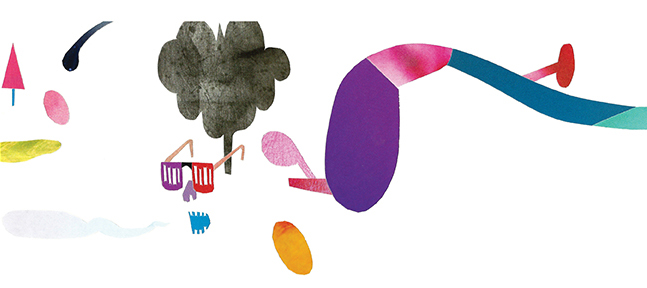
ABOUT THE ARTIST
Acclaimed artist Takashi Iwasaki [BFA(Hons)/06] brought the future to life. “Capturing moments and sharing my visions with others have been my recent obsession and pleasure,” says Japan-born Iwasaki, who left his home country at 20 to study fine art at the U of M.
ABOUT THE FAMILY
Baby Freyja was born Feb. 8, 2017. Her proud parents are Kristin Westdal [BSc/03, MEnv/09], a marine biologist and U of M PhD student focused on beluga whales and conservation, and husband Chris Paetkau [BA/06], who runs production company Build Films. “I definitely think about what the future will be like for her,” says Westdal.
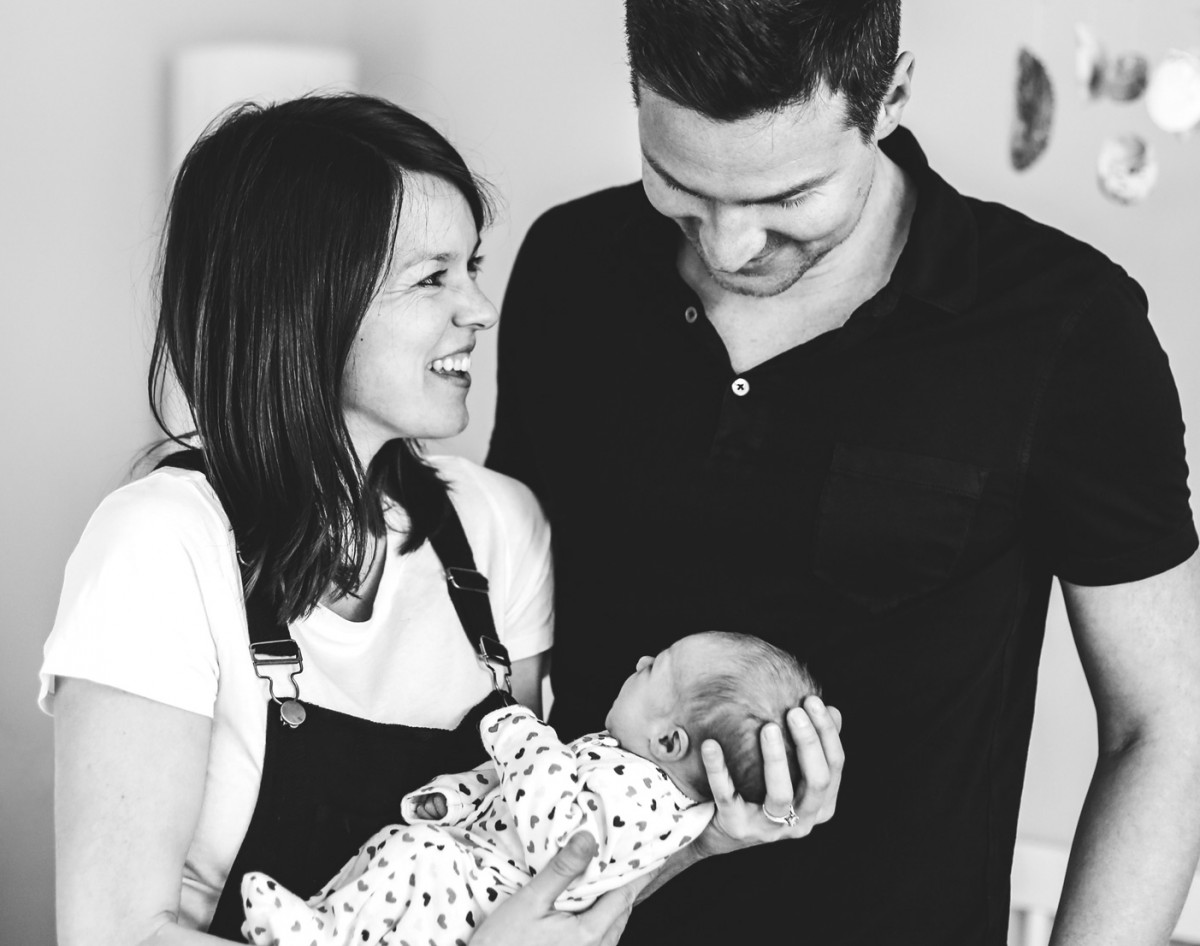
FREYJA’S FAMILY PHOTO BY RACHAEL KING JOHNSON







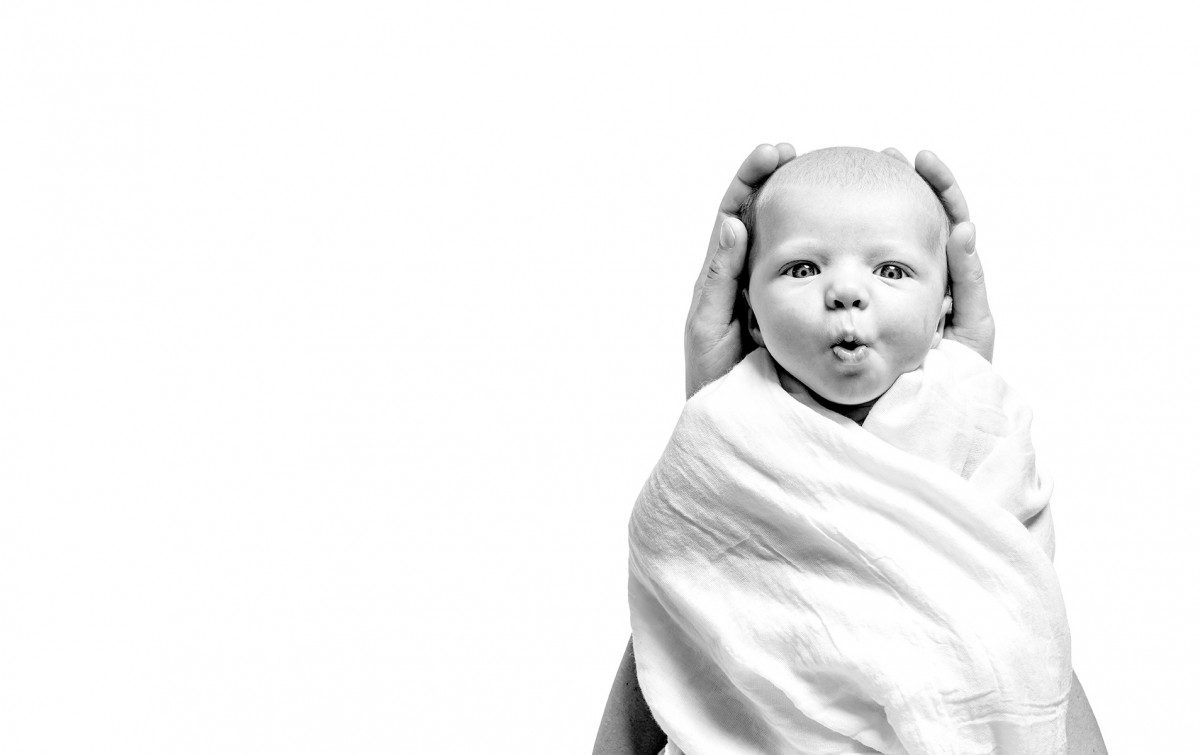
It’s always exciting to see visions of what the future could be. It seems we’ve lost that as a society. During earlier parts of the 20th Century, it seemed people were very hopeful about a better tomorrow. This article does a beautiful job of resurrecting that feeling of optimism.
Tremendous piece. Informative yet sensitive while delicately stays both reflective and respectful of our past, present and future. It’s optimism paired with a realistic critique of current conditions tugs at heartstrings and fears while inspires and invigorates the reader to a return to learn. The value of the institution and it’s role in education and our future are made clear. Moore truly does a service with this work and for me, 2042 can’t come soon enough. But, the tiny robots in my my gut say, it’s not that far-off.